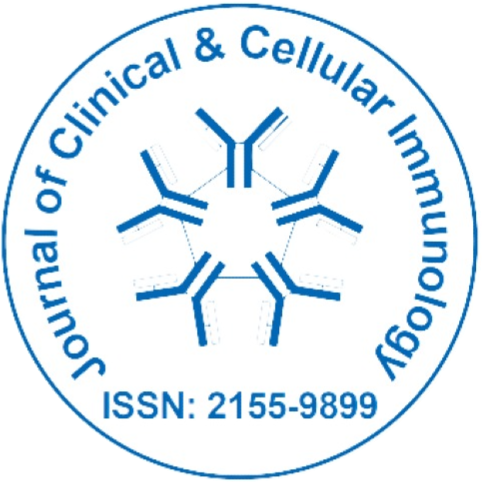
Journal of Clinical and Cellular Immunology
Open Access
ISSN: 2155-9899

ISSN: 2155-9899
Biman Saikia, Sudha Sharma, Shubham Goel, Amit Rawat, Ranjana W. Minz, Deepti Suri and Surjit Singh
Accepted Abstracts: J Clin Cell Immunol
Introduction: Severe atopic dermatitis (AD) is a common disease of childhood presenting with eczema and increased serum IgE levels, features which are also consistently seen in hyper-IgE syndrome (HIES), a rare form of primary immunodeficiency. Secondary infection of AD lesions with abscess formation can mimic skin abscesses seen in HIES. Because of similarities in clinical presentations, it is necessary to differentiate atopic dermatitis from HIES at an early age. Objective: To evaluate T H 17 cell numbers (by flowcytometry) in AD, vs. HIES. Material and Methods: We analyzed T H 17 cells (CD4 + IL-17 + IFN-γ - ) among the PBMCs in 16 cases of AD, 18 patients with HIES, and 20 healthy controls. HIES patients were further grouped in to HIES group I and group II as follows: STAT3 mutation positive (n=4) and STAT3 mutation negative (n=14). Normal range for T H 17 cells was taken as 0.58-3.6% (average 1.58% ± 0.7 %) defined by evaluating healthy controls. Results: Mean serum IgE levels in AD was 13951±30989 IU/ml, 46150±40718 IU/ml in HIES group I and 14826±17773 IU/ml in HIES group II compared to healthy controls (mean 632±1219 IU/ml). T H 17 cell numbers in AD were 2.5±1.3%, (0.5 -4.39), 0.19±0.12%, (0.09-0.3) in HIES group I and 1.41±1.04%, (0.4 to 4.1) in HIES group II. There was thus a statistically significant difference in T H 17 cell numbers between AD versus HIES group I & II (p=0.0009 & 0.013 respectively) and healthy controls (p=0.007). Conclusion: Low T H 17 cells in cases suspected to be AD may indicate an underlying STAT3 defect and should prompt evaluation for a primary immune deficiency.
Biman Saikia, M.D. (Pathology) is currently additional Professor, Department of Immunopathology at Postgraduate Institute of Medical Education and Research, Chandigarh, India. His areas of expertise and research are transplantation immunology, autoimmunity and primary immnodeficiency disorders. He has 30 publications to his credit in peer reviewed journals.